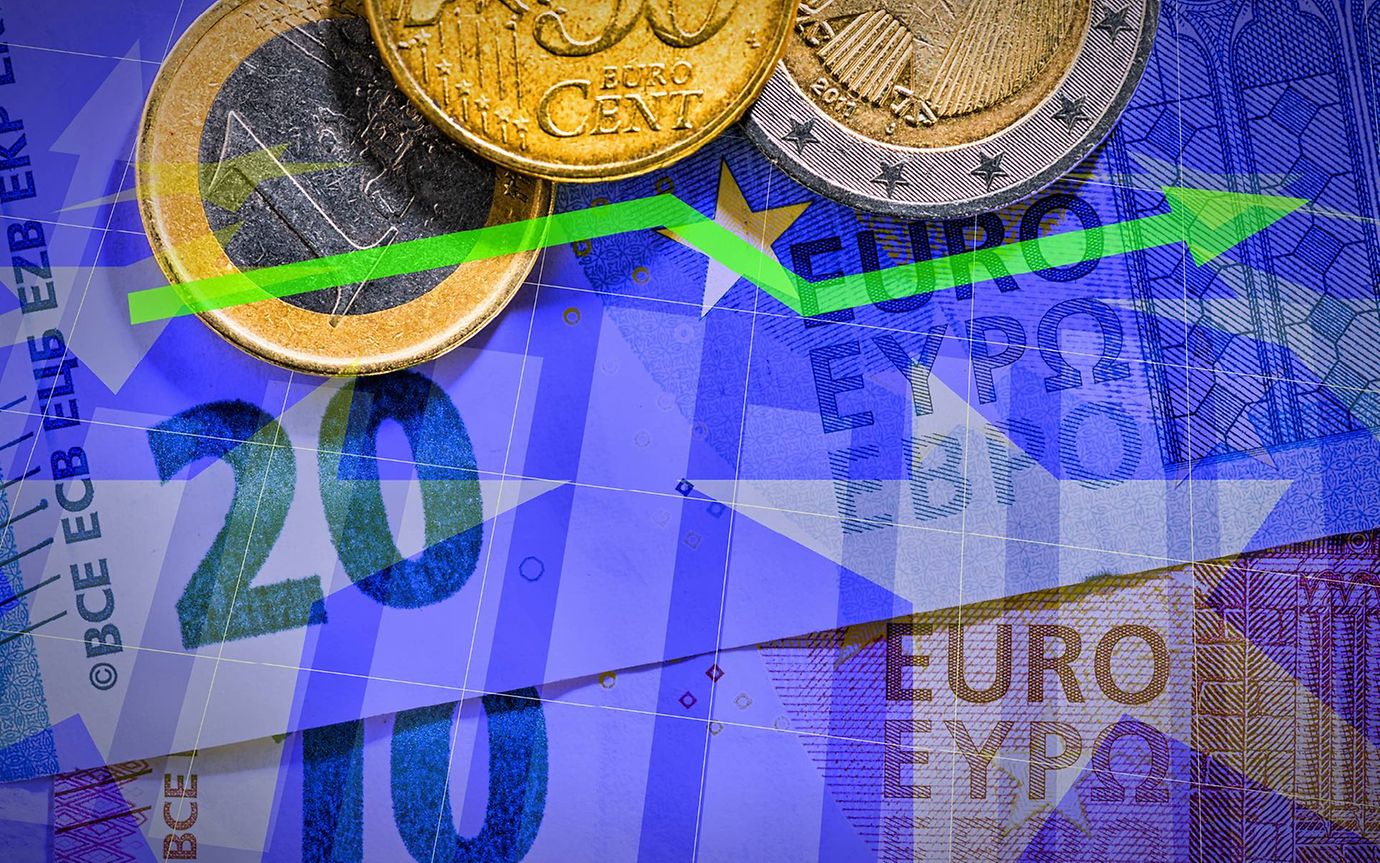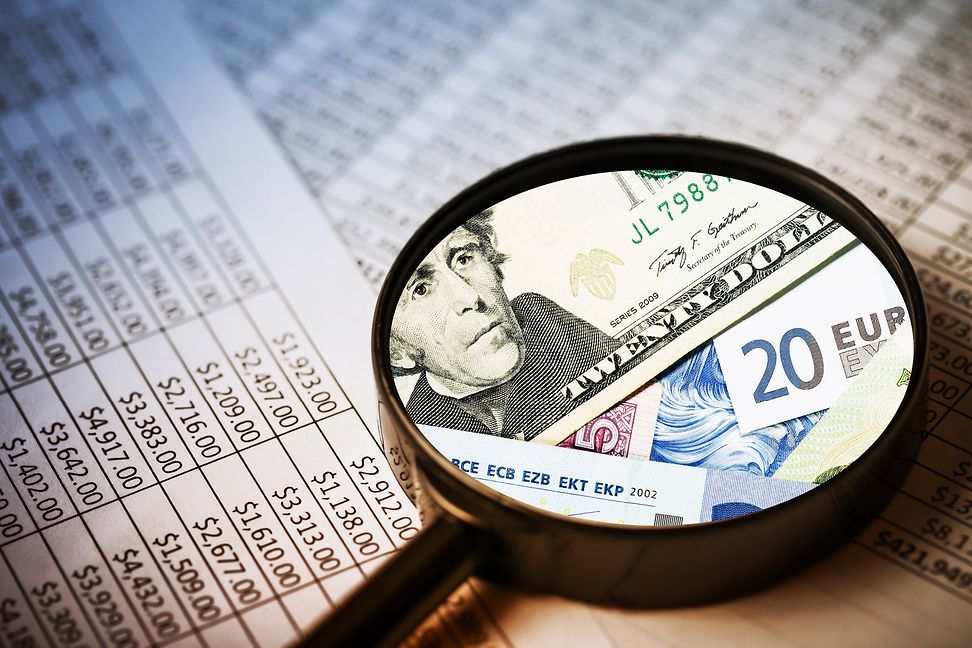在此处更改您的语言和 LGT 位置。
私人客戶的數碼平台
登錄 LGT SmartBanking
金融中介機構的數碼平台
登錄 LGT SmartBanking Pro
解答常見問題 (FAQ)
LGT SmartBanking 幫助
解答常見問題 (FAQ)
LGT SmartBanking Pro 幫助
The euro had a tough summer, but worries about its future trajectory may well be overdone, and there are good reasons to hope for an upswing.

A weak eurozone economy, the fundamental source of the common currency's woes, is already priced into the EUR/USD exchange rate, observes Sebastian Petric, Senior Investment Strategist/Fixed Income & FX at LGT Private Banking. "The question now is: What happens next?"
With inflation currently looking more under control, economic momentum in the US expected to slow, and the real interest rate advantage that the US has long enjoyed likely to lessen, Petric anticipates a shift in market sentiment, with a sustainable boost for the euro into 2024 already perceptible.
To be sure, the weak performance of the eurozone economy in 2023 has given euro investors plenty of cause for concern.

Manufacturing activity in the 20 countries that use the euro has continued to slump, contracting for the sixteenth consecutive month in November. In Germany, Europe's biggest economy, the Producer Price Index (a measure of the change in prices that domestic producers receive for their goods and services) slipped for the fourth consecutive month, and was down 11 per cent over the year, led by energy and metals prices. German unemployment, meanwhile, hit a two-year high of 5.8 per cent in November.
Small wonder that with Europe's economic powerhouse stalling, the European Central Bank forecasts eurozone growth of just 0.6 per cent for 2023. Or that in early October, the euro dropped to its lowest level against the dollar (at USD 1.0478) since December 2022.
Even so, says Petric, investors "may be overly pessimistic about the eurozone's prospects," and thus those of the euro. An additional problem, apparently, is that investors "seem to be extrapolating the current strength of the US economy into the future." A miscalculation, in his view.
Until roughly autumn of this year, the US dollar had shown remarkable resilience thanks to the post-pandemic strength of the US economy relative to the eurozone, the widening gap in real interest rates between the US and other major regions, and deepening doubts about China's economic outlook.
There is much to suggest that the euro will enjoy an upside relative to the dollar over an extended horizon.
As its GDP growth slows down more sharply relative to the eurozone, economic momentum in the US is predicted to lessen. In addition, as inflation eases and US Federal Reserve interest rate hikes turn into potential cuts in 2024, the yield-driven upside that the US currency has long benefited from seems likely to become a thing of the past. This provides momentum for the euro's recent gains.

It's worth noting that in late November, with the "peak rates narrative" dominant and investors beginning to forecast when the Fed might start to cut interest rates, the Dollar Index registered a decline while the euro reached a multi-month high against the greenback, trading at around USD 1.095.
The big question, of course, is how sustainable the euro's recovery might turn out to be. And Petric thinks it probably is sustainable, despite the continuing economic weakness in the eurozone.

"We formulate our long-term outlook by considering various factors, including models that lean toward a quantitative approach," he explains. These models suggest that the euro will enjoy an upside relative to the dollar "over an extended horizon". Models like Purchasing Power Parity (which measures the absolute purchasing power of different currencies by eliminating price/inflation differentials over time) support this view.
Nevertheless, as Petric cautions, predicting currency movements is a fine art that involves a complex blend of financial, economic, and technical analyses to gain a comprehensive understanding of the overall foreign exchange market, even before the distinctive attributes of individual currencies are assessed. These days, moreover, geopolitical factors play a very significant role and market sentiment can quickly change.
"It's all relative," says Petric, especially regarding the euro, which is, after all, the product of a political and economic union that remains a work in progress.
Meanwhile, despite structural issues like the US's persistent current-account deficit and high fiscal deficit to GDP ratio, which theoretically support a bearish view of the US currency longer term, the dollar's dominance in global reserves seems assured. According to Petric, reports of its demise as a global reserve currency are "greatly exaggerated".
Even the recent fall in the US dollar holdings of central banks, which was reported by the International Monetary Fund (IMF) back in the summer, was primarily due to valuation changes driven by US monetary policy. Major central banks have not made significant adjustments to their US dollar reserves more recently.

Petric thinks that the euro may yet emerge as a challenger to the US dollar, particularly in central bank allocations. However, the incomplete nature of the eurozone's monetary union hampers its potential as a full-fledged alternative. Nor does additional data, such as on debt markets and foreign exchange turnover, support the idea of significant de-dollarisation.
"It's also crucial to recognize the robustness of the US dollar's global position beyond its reserve status," says Petric. "The greenback remains the primary currency for global trade invoicing, with approximately 60 per cent of trade transactions denominated in dollars across various regions."
In short, sustained by deep and liquid capital markets and stable, well-developed institutions, the US dollar remains the leading currency in central bank reserve allocations and is likely to retain its supremacy for the foreseeable future. Europe's beleaguered common currency seems finally set for a sustained upswing, but it's still unlikely to usurp the greenback any time soon.